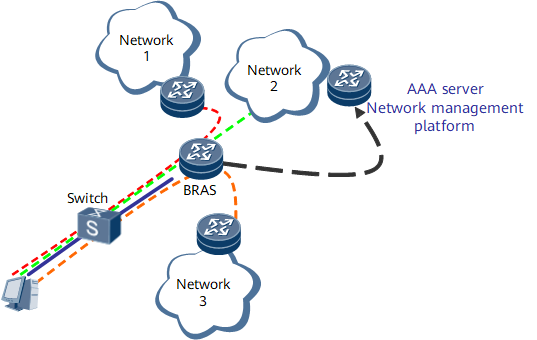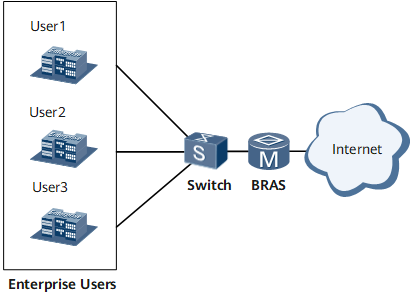Typical Usage Scenarios of DAA
Destination address accounting (DAA) is performed at different tariff levels defined based on different destination addresses of user access traffic. DAA resolves issues involved in the following scenarios.
Separate Operation for Local and Toll Networks
In a region where a toll network and a local network are separately deployed, the local carrier must rent the toll network carrier's expensive egress link for connecting to the Internet and pay the toll network carrier for expensive Internet traffic. Internet traffic and intranet traffic have large cost differences. Therefore, the local carrier needs to distinguish between Internet traffic and intranet traffic and perform accounting based on different tariff levels to ensure revenues.
When a user visits networks 1 to 3 shown in Figure 1, accounting based on volume and time is performed for traffic over the three networks. Three DAA services are planned for the three networks, and accounting is independently performed for each service.
PUPP Mode
In the per user per policy (PUPP) traffic management mode, a policy is specified for each user. Either the same policy or different policies can be specified for different users.
As shown in Figure 2, multiple users in an enterprise access the network over a Layer 2 or Layer 3 leased line. All the users in the enterprise are on the same VPN. Applying a traffic policy for each user allows access control between different users in the enterprise.

